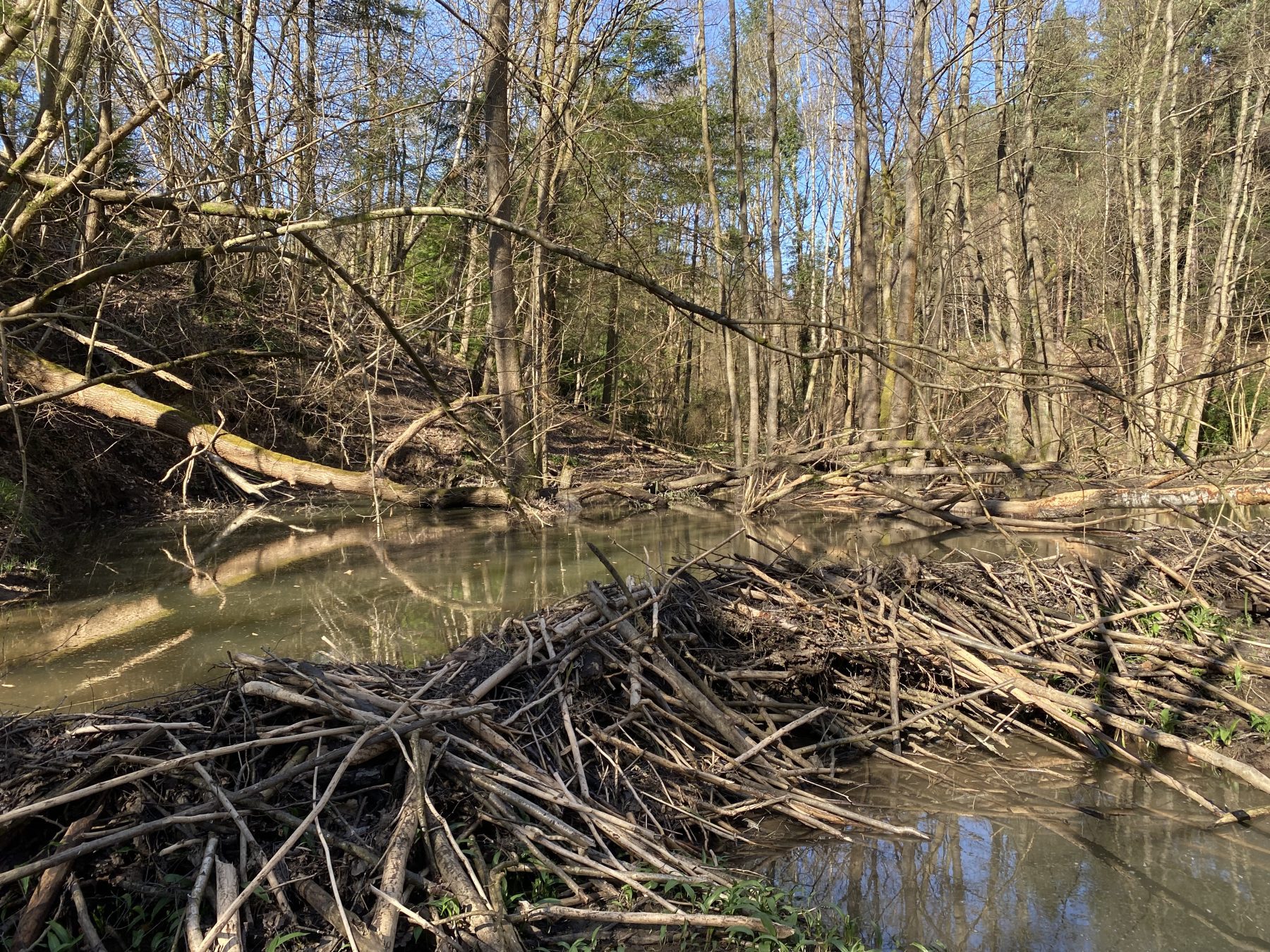In April 2024, something quietly momentous happened in the heart of Shropshire: a family of six beavers were released. What changes have been seen since?
Two adults and their four kits were relocated from Scotland to a specially designed five-hectare Forestry England enclosure in the Wyre Forest, in partnership with Beaver Trust and Natural England. Since their arrival, the beavers have not only settled in – they’ve got straight to work, modifying their surroundings to create a safe haven for the family.

One of the most striking changes has been the creation of a 30-metre-long beaver dam, visible from the forest road. Behind it, a large pool now stretches along what was once a trickling stream. This new wetland is already shifting the character of the woodland, slowing water flow and helping the forest to hold onto more water in times of drought – an increasingly important role as our climate becomes more unpredictable.
“It has been incredibly special to watch the beaver family adapt and thrive here in Wyre Forest,” said Richard Boles, Wyre Beat Forester for Forestry England. “Witnessing the changes they’ve made to the landscape through their natural behaviours has been truly remarkable.”
Wet woodland ecosystems were once common across the UK, but much has been lost or destroyed over recent decades due to clearances and land drainage for agriculture and industrial development. They’re often found on floodplains and as small patches within larger wooded areas, and are extremely rich in invertebrates.
The high humidity favours the growth of bryophytes like mosses, liverworts and hornworts, and the dead wood provides specialised habitats not found in dry woodlands because of its association with water. For example, a species of cranefly, Lipsothrix nigristigma, is associated with log jams in streams.
Signs of success
One of the aims of releasing beavers into the Wyre forest is to improve water quality and flow into Dowles Brook and ultimately the River Severn. In just 15 months, the beavers have transformed the area, building several dams that have created permanent wetland habitats.
Despite recent dry spells, the beaver dams are helping to retain water effectively. While there’s no sign of kits yet, we’re hopeful as they have been gathering bracken and taking a large amount of foliage into their original lodge.

By felling trees, building dams and digging channels, beavers shape the land in ways that benefit a wide range of species, from amphibians and fish to birds and insects. They create messy, complex habitats that can boost biodiversity, improve water quality and even help reduce downstream flooding.
What’s happening in Wyre Forest is part of a broader picture across Britain, where beavers are being reintroduced to help build climate resilience and ecological richness.
Forestry England is closely monitoring how the habitat changes over time and what we can learn from the Wyre Forest site. As the beavers continue to shape their woodland home, more updates will be shared in our newsletter or on Forestry England’s social media channels.
Find out more about the Wyre Forest beaver project
